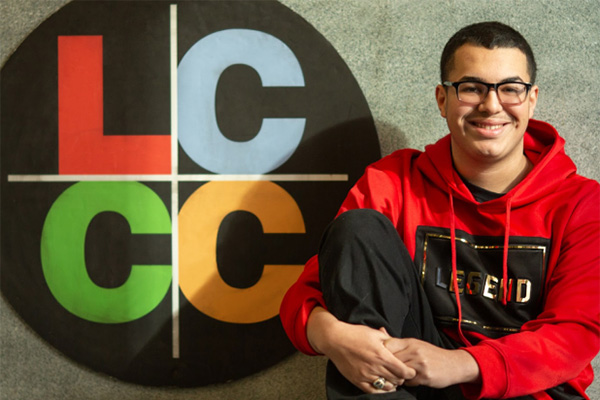Part of LCCC’s classroom experience is the use of state-of-the-art, high-fidelity Gaumard simulators, which are high-tech mannequins that mimic medical situations. The simulators give the students experience in dealing with a variety of conditions, as well as teach them to remain calm and think critically during emergencies.
(The simulators) bring realism to situations that you might not always see,” says Barbara Lupole, director of nursing programs at LCCC.
Compared to the low-fidelity simulators that are used to practice muscle injections and other basic skills, the high-fidelity simulators are lifelike and technologically advanced. They can be manipulated for a variety of lessons, putting students in situations that they will face in the workforce, such as assessing symptoms and administering IVs and medication.
The latest addition to the program is a birthing mother simulator, which is a female mannequin used for OB/GYN classes. The simulator, funded through the federal Perkins Career and Technical Education grant, allows students to participate in a simulated child delivery. They practice routine tasks like making incisions and caring for the newborn, as well as emergency situations such as a breech birth.
Inside a small control room, a faculty member can wirelessly control the simulators via computer, making them come to life. The instructor programs the simulator to exhibit symptoms, and the students are tasked with assessing and properly treating the “patient.” The instructor then monitors how the students care for the patient via a double-sided mirror.
“The faculty member can draw out more clinical decision-making cues from the students,” Lupole says.
For example, the instructor in the control room may program an emergency scenario in which the baby is breeched, and the simulator will then display the corresponding symptoms. The students assess the symptoms as if the simulator were a real patient, and react and treat the mother and baby accordingly, allowing the students to learn by experience rather than theory. The instructor can then follow up with a debriefing that allows the students to reflect on their performance.
“You do have the chance to improve while still in the learning process, because the simulator is right there,” Lupole says.
The program’s two other simulators – “Hal,” an adult, and “Hal Jr.,” a 6-year-old – are used in the same manner. Hal can act as a male or female patient to create a wide variety of scenarios, such as high blood pressure. If the students accurately diagnose the issue and give Hal the correct “medication” that is encoded to work with the simulators, then Hal ‘s symptoms are relieved.
Additionally, Hal Jr. can be programmed for emergency situations both inside and outside a hospital. For example, Hal Jr. can be manipulated to sit at a desk, and then the instructor will simulate the symptoms of a seizure, which allows students to work through the situation of a child experiencing an emergency while at school.
“(By having the simulators in the classroom), it allows the students to truthfully say, ‘Yes, I have done this before,’” Lupole says.
Providing the “risk-free learning environment” fosters the students’ ability to retry medical methods and allows room for a trial-and-error process, Lupole says, while building their critical thinking skills and ability to act under pressure.


